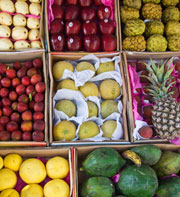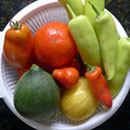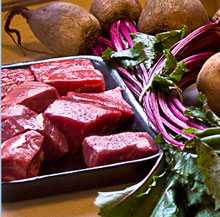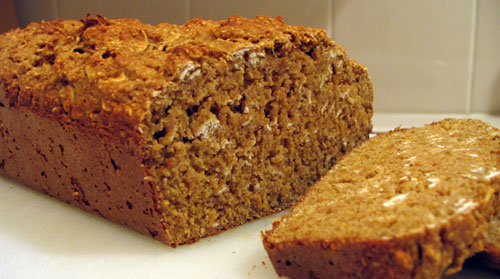Tips for Eating Healthy
Your food and physical activity choices each day affect your health — how you feel today, tomorrow, and in the future. These tips and ideas are a starting point. You will find a wealth of suggestions here that can help you get started toward a healthy diet. Choose a change that you can make today, and move toward a healthier you.
Focus on Fruit

People who eat more vegetables and fruits as part of an overall healthy diet are likely to have a reduced risk of some chronic diseases. Fruit provide nutrients vital for health, such as potassium, dietary fiber, vitamin C, and folate (folic acid). Most fruits are naturally low in fat, sodium, and calories. None have cholesterol. Any fruit or 100% fruit juice counts as a part of the Fruit Group. Fruits may be fresh, canned, frozen, or dried, and may be whole, cut-up, or pureed. Fruits are nature's treats - sweet and delicious!
Vary Your Veggies

Eating vegetables is important because they provide vitamins and minerals and most are low in calories. Cook fresh or frozen vegetables in the microwave for a quick-and-easy dish to add to any meal. Steam green beans, carrots, or broccoli in a bowl with a small amount of water in the microwave for a quick side dish. Brighten your plate with vegetables that are red, orange, or dark green. They are full of vitamins and minerals. Try acorn squash, cherry tomatoes, sweet potatoes, or collard greens. They not only taste great but also are good for you, too.
Go Lean with Protein

Protein foods include both animal (meat, poultry, seafood, and eggs) and plant (beans, peas, soy products, nuts, and seeds) sources. We all need protein—but most Americans eat enough, and some eat more than they need. How much is enough? Most people, ages 9 and older, should eat 5 to 7 ounces of protein foods each day. What counts as an ounce of protein foods? 1 ounce lean meat, poultry, or seafood; 1 egg; . cup cooked beans or peas; 1/2 ounce nuts or seeds; or 1 tablespoon peanut butter.
Go With Whole Grains
Any food made from wheat, rice, oats, cornmeal, barley, or another cereal grain is a grain product. Bread, pasta, oatmeal, breakfast cereals, tortillas, and grits are examples. Grains are divided into two subgroups, whole grains and refined grains. Whole grains contain the entire grain kernel—the bran, germ, and endosperm. People who eat whole grains as part of a healthy diet have a reduced risk of some chronic diseases.

